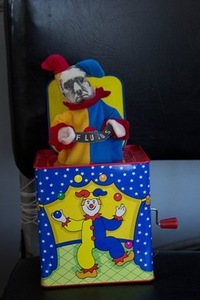BETWEEN EAST AND WEST. ‘GEORGE MACIUNAS AND BEYOND: FLUXUS NEVER STOPS’ 3
In brief: The Fluxus trolleybus, curated by Kaunas Biennial Textile’11, ran in various Kaunas streets on the 19-26th of October. The reason for this experimental exhibition was two anniversaries – fifty years from the first Fluxus happening and the 80th birthday of Jurgis Mačiūnas (George Maciunas). The surprise of Fluxus truly happened and that could be seen in the reaction of every viewer. It encourages us to examine concepts hidden behind Fluxus and the significance of its rather unexpected relation to the Far East philosophy. The influence of Zen Buddhism and the Far East culture for this movement is mentioned in many publications but in Lithuania it is not discussed widely.
The Fluxus movement was born in the vivid 60’s in the USA. During the war in Vietnam, interesting cultural interchanges happened between the West and the East. Not only emigrants of various nations but also religious texts, aesthetic concepts flew into America from the East. Artist John Cage, who studied for some time at the Black Mountain College of Eastern philosophy and Zen Buddhism, chose the name for the Fluxus movement, meaning a constant flow. Anyways, the movement was organised and developed by Jurgis Mačiūnas and his friends. Beside J. Cage, Ray Johnson also studied at the college mentioned above – a prominent Fluxus member who surprised everyone with his Nothing happenings and mail art. Fluxus would not have settled without the ideas of Marcel Duchamp and Dadaism too. Hence, Fluxus could be interpreted as the fusion of the Western art forms and the Eastern philosophy.
The title of the exhibition organised by Kaunas Biennial – ‘George Maciunas and Beyond: Fluxus Never Stops’ – shows that the organisers (initiator – Edd Caroll) paid attention to the significance of contexts and processes of the movement. The Fluxus trolleybus stopped in all usual public transport stops in order to let every passenger familiarize with the Fluxus art.
The viewers were allowed to touch all the exhibits of the trolleybus, to open the Fluxus boxes, take out their content and play with it. Interestingly, a common, old trolleybus gathered the Fluxus spirit and became both gallery and exhibit, evoked the sense of the unexpected and made return to the here and now. Some passengers expressed joy or sarcasm, others just shrugged their shoulders but there were no indifferent ones. The Fluxus trolleybus could be perceived as a gesture, characteristic to one of the most essential truths of Buddhism – one has to concentrate on the present, the act that is realised at the moment.
Fluxus is accepted rather controversially. One of the biggest misunderstandings is the wish this movement had a clear meaning and conceptual framework. In the Western culture, world is still acknowledged through the philosophy of Plato, saying that there is an essential, constant idea behind all things. In the meantime, in the Eastern philosophy, based on Confucianism and Daoism, the attention is drawn towards the processuality rather than the search of meaning. It also tells that the basic law is a constant change and there is no one fixed idea.
The question is raised, if Fluxus is tried to be experienced through the participation in its process, or if there is an aim to evaluate this movement properly. This is how the Western philosophy approaches to Fluxus, devaluating the spontaneity, playfulness and process that is accentuated by the Eastern philosophy.
It would be hard to say flatly, how much the Far East philosophy and the Western culture affected the Fluxus movement. Concrete facts prove such links but it is especially confirmed by the possibilities of real experiences, scenarios of happenings and creative experiments. The project organized by Kaunas Biennial showed that Fluxus can change not only the way of presenting art exhibitions but also the experiences of the everyday. That should encourage us to give up preconceived notions and to discover unexpected experiments and processes.












